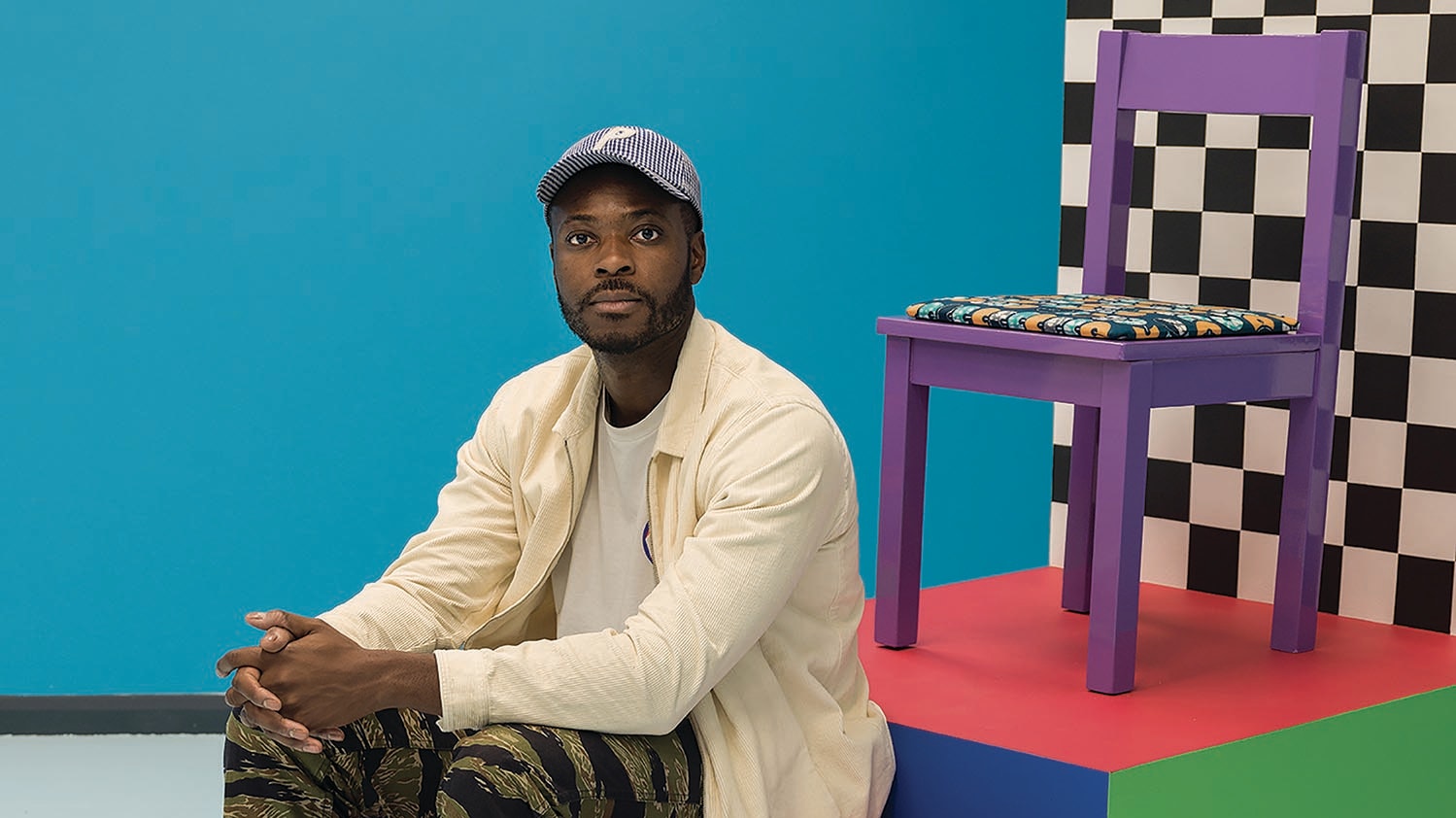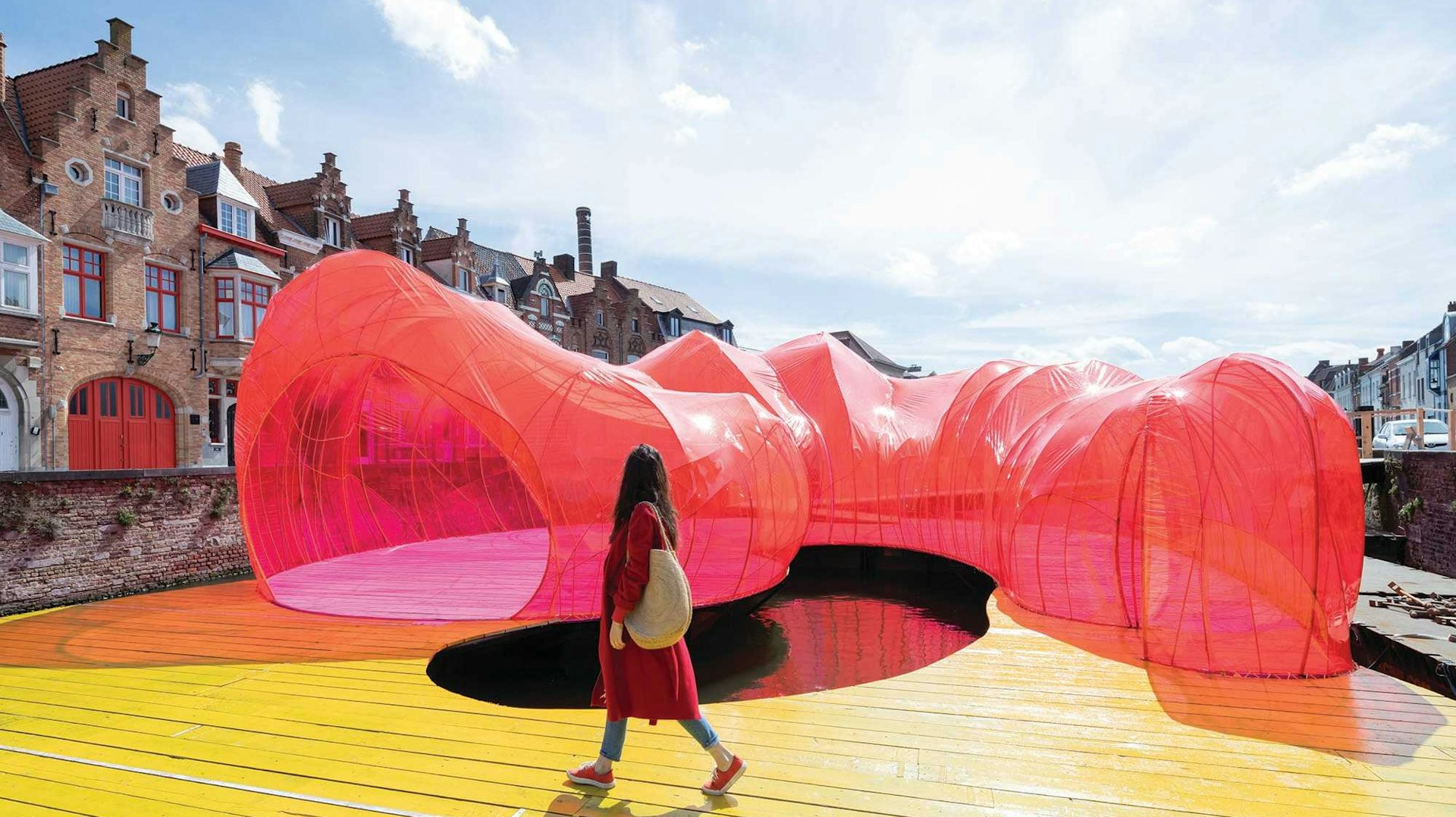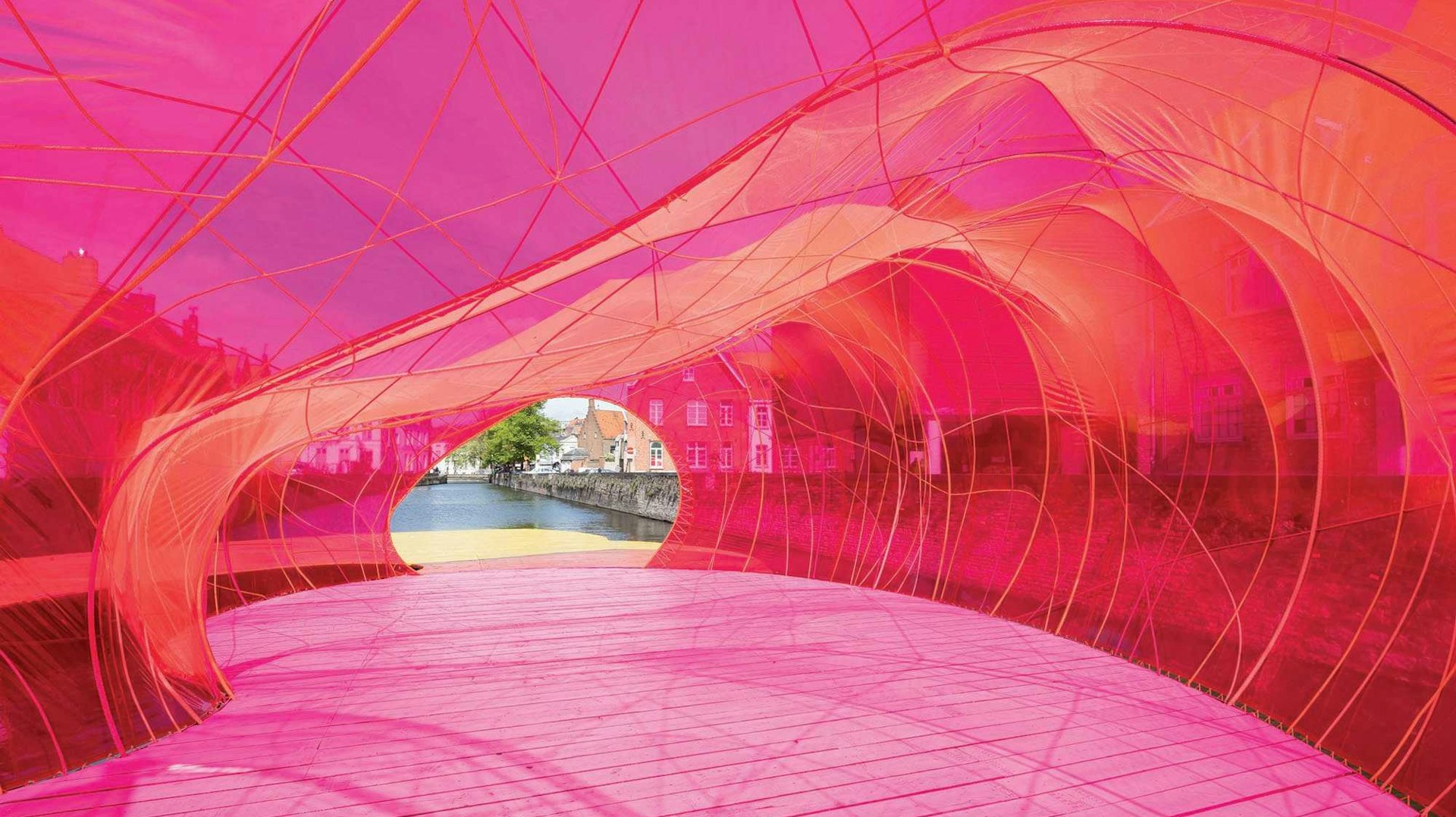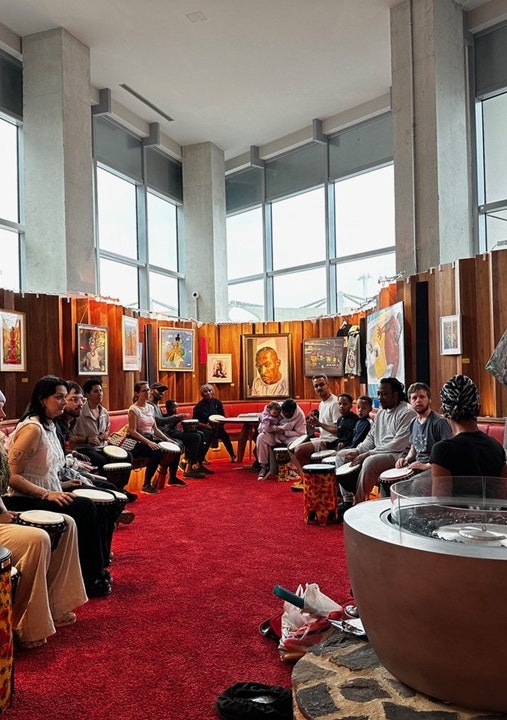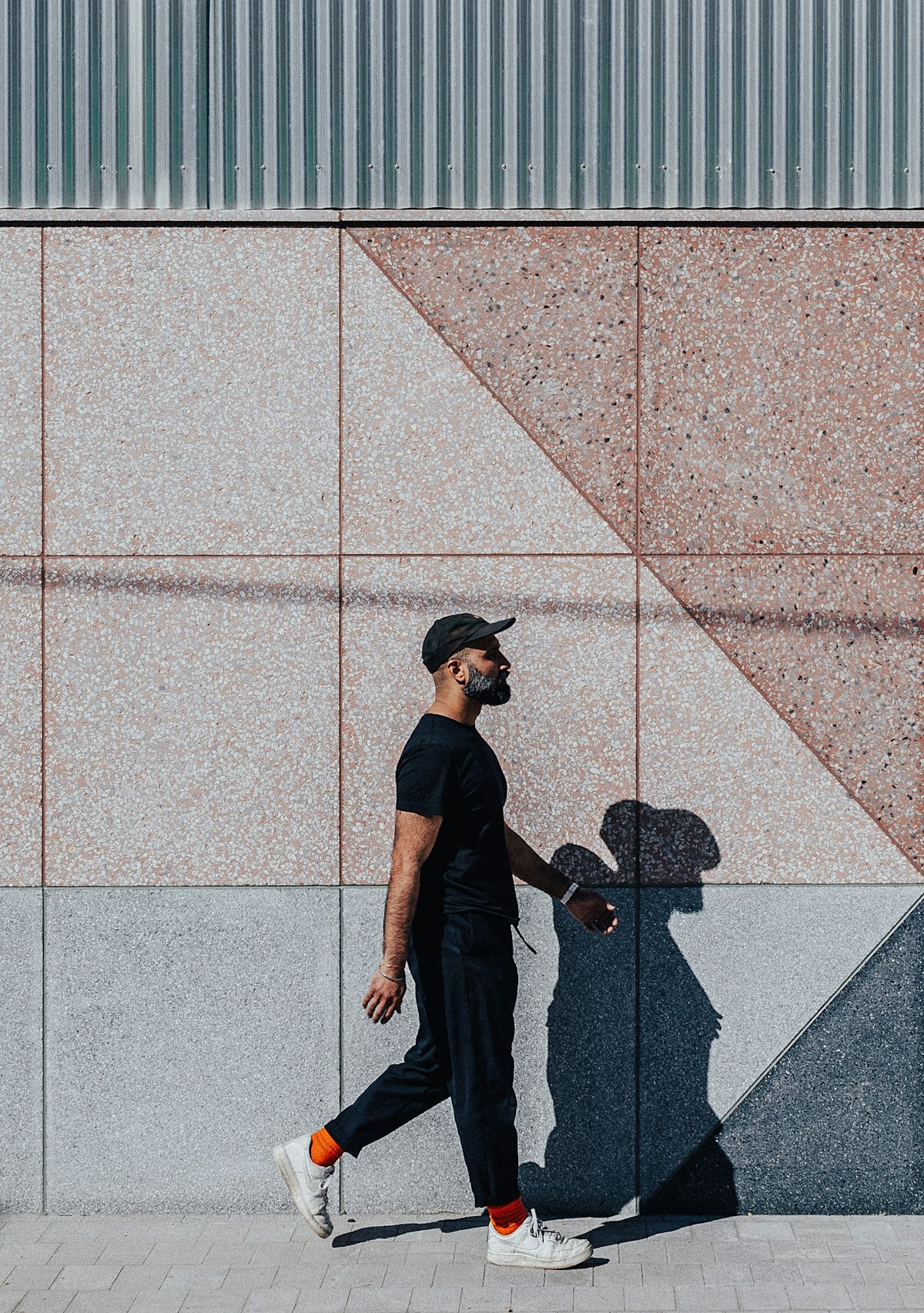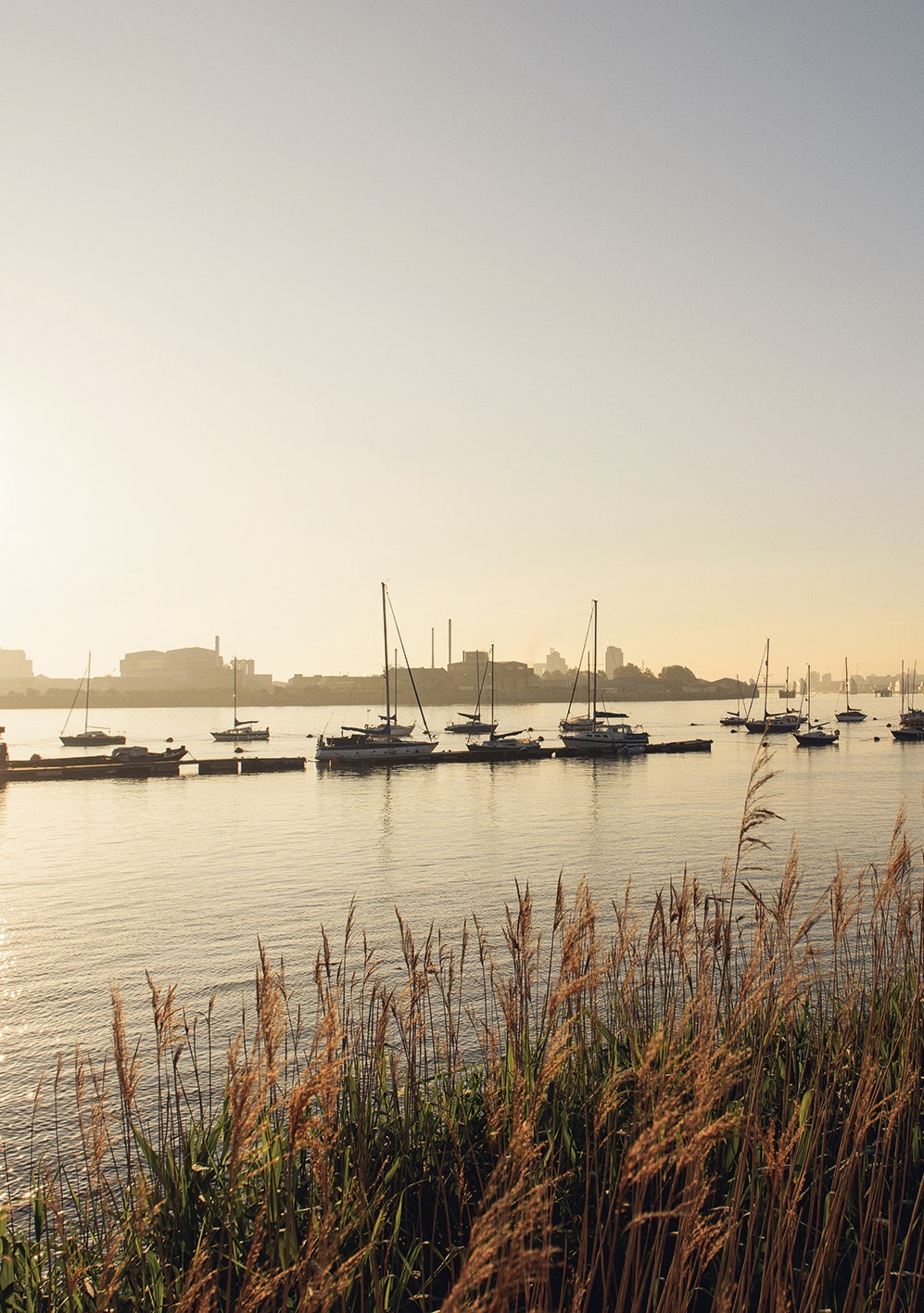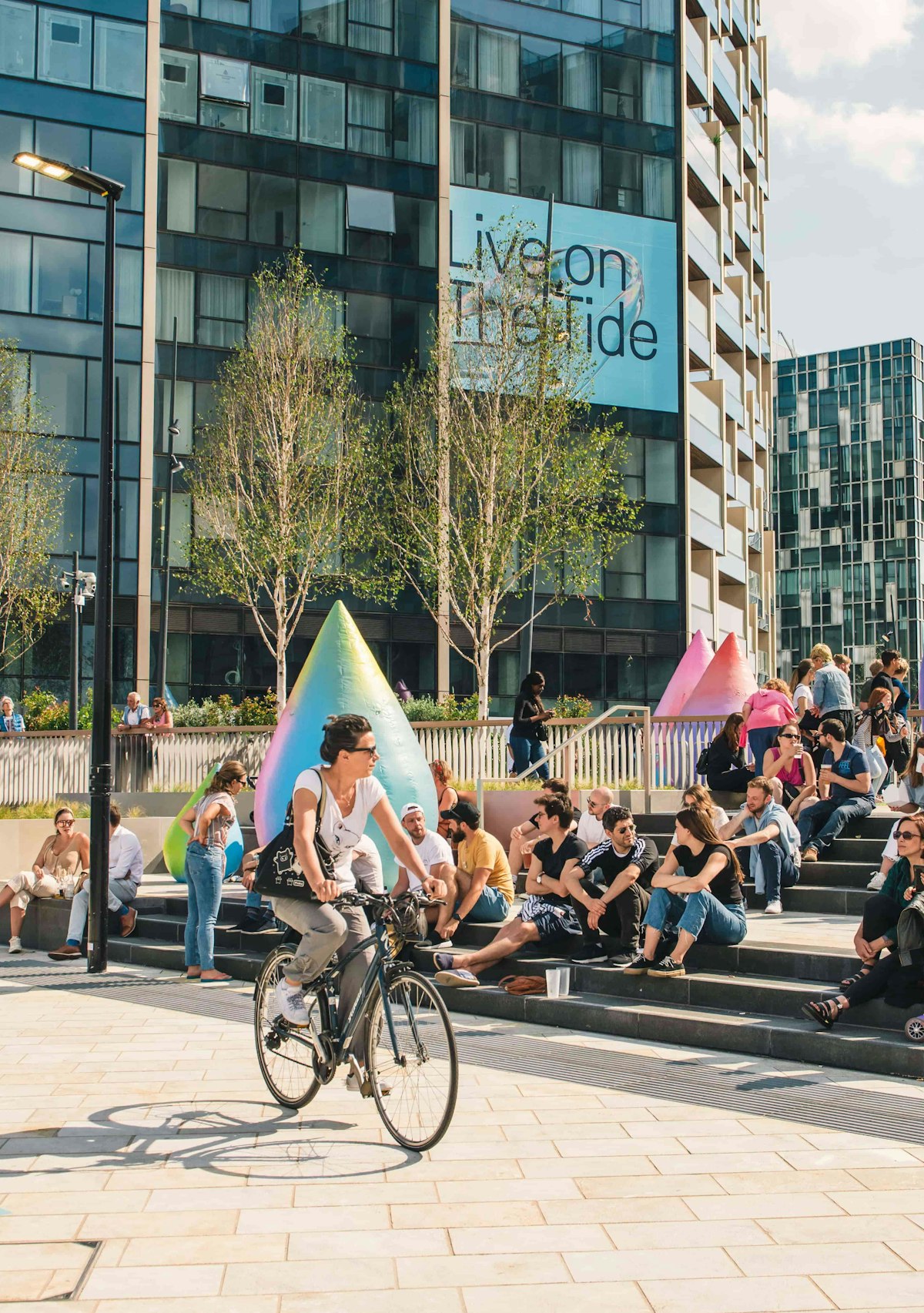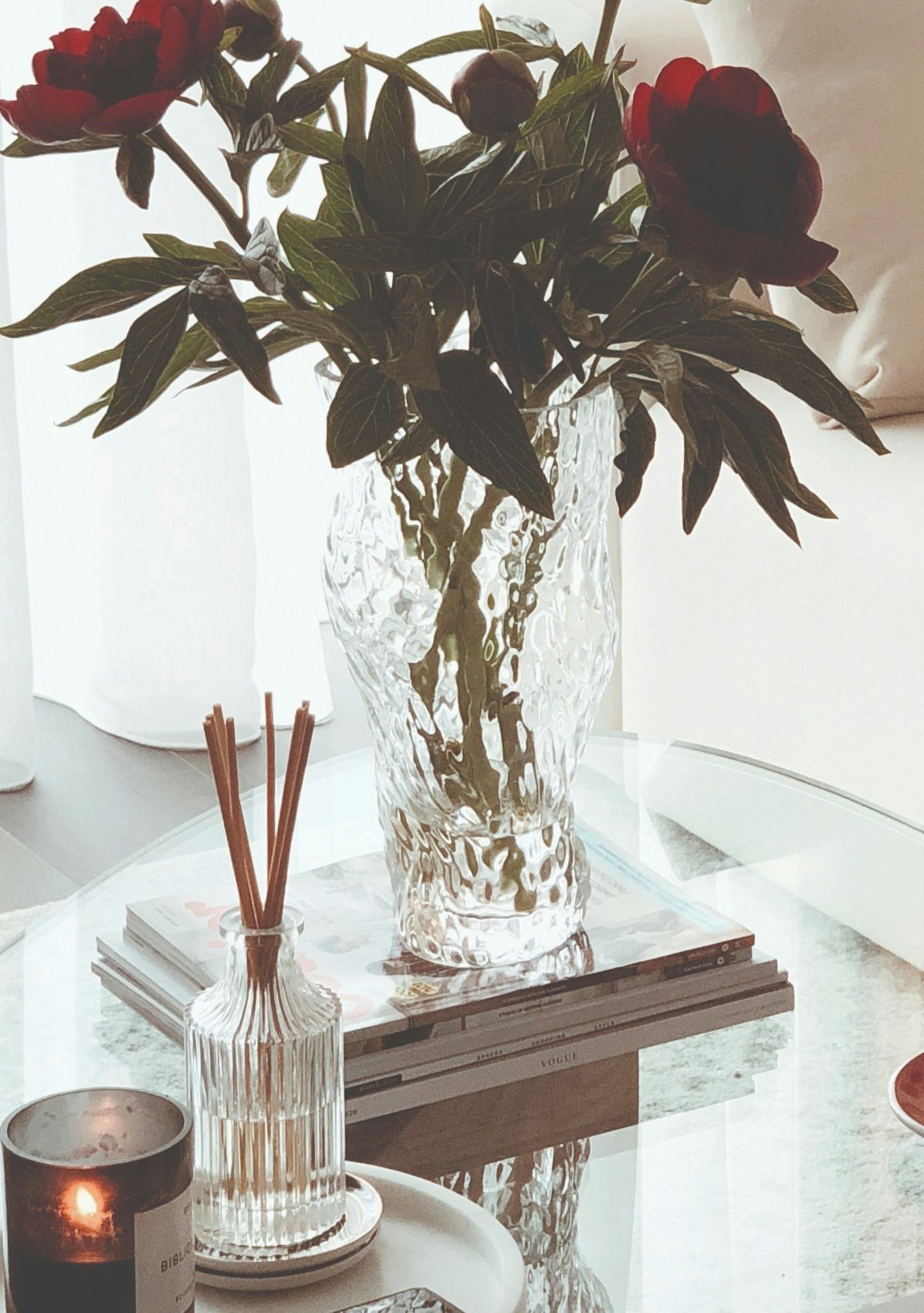
The Joy of Living
Do your surroundings make you happy? We explore the importance of joy in the urban landscapes around us and talk to the artists and architects who are injecting much-needed colour and play into to our public spaces.
When was the last time you experienced the pure, unexpected joy of turning a corner and happening upon an irresistibly eye-catching art installation or playfully designed building? Something just waiting to be interacted with, whether that means being climbed on, played with or simply having its photo taken, and giving your day a much-needed lift in the process? In London we’re thoroughly spoilt for choice; from billboards and murals in glorious technicolour to pop-up pavilions and incredible art trails, there’s a wealth of public work dreamed up by artists and architects in every corner of the capital. All you have to do is notice them. “I worry about people going about their day in such a fast-paced manner that they miss things,” says visual artist Liz West. “I want people to be encouraged to see more deeply. We all go through the world completely in our little bubbles, looking at our phones, and we forget to look around us; I’m always head in the clouds, looking up, looking down, looking at what’s happening around me, whether that’s music or fashion or people, buildings, architecture, design. I think people fail to see that and so I try to slow people down and get them to take into consideration their surroundings.”
For the most part, joy is not something that’s naturally inbuilt into our public spaces. Function and utility, understandably, rank much higher in the list of priorities and, from suburban high streets to the West End, our surroundings range from the municipal and historical to the polished, sleek and flashy. There is, of course, true beauty to be found – but fun is all too rare. After all, art and architecture are serious businesses. But whether it’s to offer a brief respite from the hectic pace of daily life or a spontaneous moment of delight in the face of testing times, now, more than ever, injecting colour, joy and an element of tongue-in-cheek levity into our surroundings, and creating places that communities and connections can be built in and around, feels like a necessity. And it’s worth remembering that, just because something doesn’t take itself too seriously, doesn’t mean it hasn’t been given serious thought and care.
Take Liz West’s Hundreds and Thousands, recently installed on the Peninsula: it’s an ever-evolving kaleidoscope of colour created by wrapping a 700m stretch of the glass walkway that runs along the Tide in a rainbow of jewel tones. Not only is it truly beautiful and one of the most happy and heart-warming things you’re likely to see as you walk around London, it highlights the multi-layered brilliance of so many al fresco artworks, too. West’s work is meticulously thought out, fuelled by the science of light, colour theory and the behaviour of colour, and Hundreds and Thousands is designed to act as a giant sundial, inspired by its position just across from the Greenwich Meridian. But it’s also an incredible piece to simply look at or interact with; its light changes with the weather, creating amazing reflections on wet ground and sunny ribbons of colour on brighter days. “You can engage with it at any level, whether you’re a child or coming to it as an adult, and it will make you feel more uninhibited.” says West.
That desire to encourage people to shake off any sense of self-consciousness and get them playing, particularly adults who have forgotten how, is what powers Yinka Ilori’s work, too. The London-based multi-disciplinary artist and designer – his work to date spans everything from skateparks and murals to cushions and crockery – is fast becoming one of the most-discussed and in-demand creatives in the business, thanks to his riffs on vibrant prints, bold patterns and block colours inspired by his British-Nigerian heritage. “I think my love of colour comes firstly from my family – my mum and dad and relatives wearing colour to church services and weddings because it brings them happiness,” he says “That’s so contagious. It’s become a huge part of my life and my practice.” This summer he’s set to bring that contagious cheer to the Tide at Greenwich Peninsula, conjuring an immersive space entitled Promise Me Memories and I Will Let You In, which will be used as a backdrop for events over the coming months. “Looking at the year we’ve had, everyone’s searching for some sense of joy or uplift, some sense of hope,” he says. “One of the things we’ve missed out on especially is connecting with new people and creating memories, so I’m trying to catch up on lost time. I want to create this wonderland of play objects and art; this immersive space that we can direct our dreams in and create memories with people we love and care about.”
“"One of the things we’ve missed out on especially is connecting with new people and creating memories, so I’m trying to catch up on lost time. I want to create this wonderland of play objects and art; this immersive space that we can direct our dreams in and create memories with people we love and care about."”
The fact that those people are likely to be multi-generational and from an endlessly diverse range of backgrounds is part of what makes all these works so powerful: they’re a great leveller, as easy to get involved with if you’re nine or 90. And, crucially, they’re genuinely accessible, too – freely available to anyone who happens to walk past. That idea that art should be for everyone is something that Ilori is passionate about. “Growing up, I thought that art wasn’t always accessible or inclusive, but there’s no reason why it couldn’t be or shouldn’t be,” he says. I want to have my work in different places around London that haven’t seen artists before and people get to experience it for free and be in touch – even if they don’t know it’s me, I don’t care; the fact that they stood up there and looked at it and took a photo is magical.”
Victor Jiménez, architect at the game-changing Madrid-based architecture firm SelgasCano, believes that design shouldn’t just be available to everyone, but reflective of them, too. “I think that there has to be an expression of all of us,” he says. “If you have a bunch of friends, you have some that are serious, others that are noisy, so, in the end, I think the best thing is that it is all expressed in the architecture of our cities, that there’s not only one line or style.” SelgasCano is renowned for conjuring buildings that incorporate not just an expansive colour palette and unexpected, light-filled shapes, but as much nature as possible, too – and for being a studio that’s the antithesis of the hierarchical, high-pressure environment that makes most architectural firms tick. It’s their democratic approach and relaxed attitude towards rule breaking and making mistakes that gives their structures such a liberated feel. The Food Hall that the firm has designed for the Peninsula’s soon-to-be-opened Design District is a case in point: a jaunty, translucent, caterpillar-shaped building, trimmed in yellow and filled with trees. “Maybe that’s the key to joy,” says Jiménez. “To do things without being worried about the meaning of it.”
